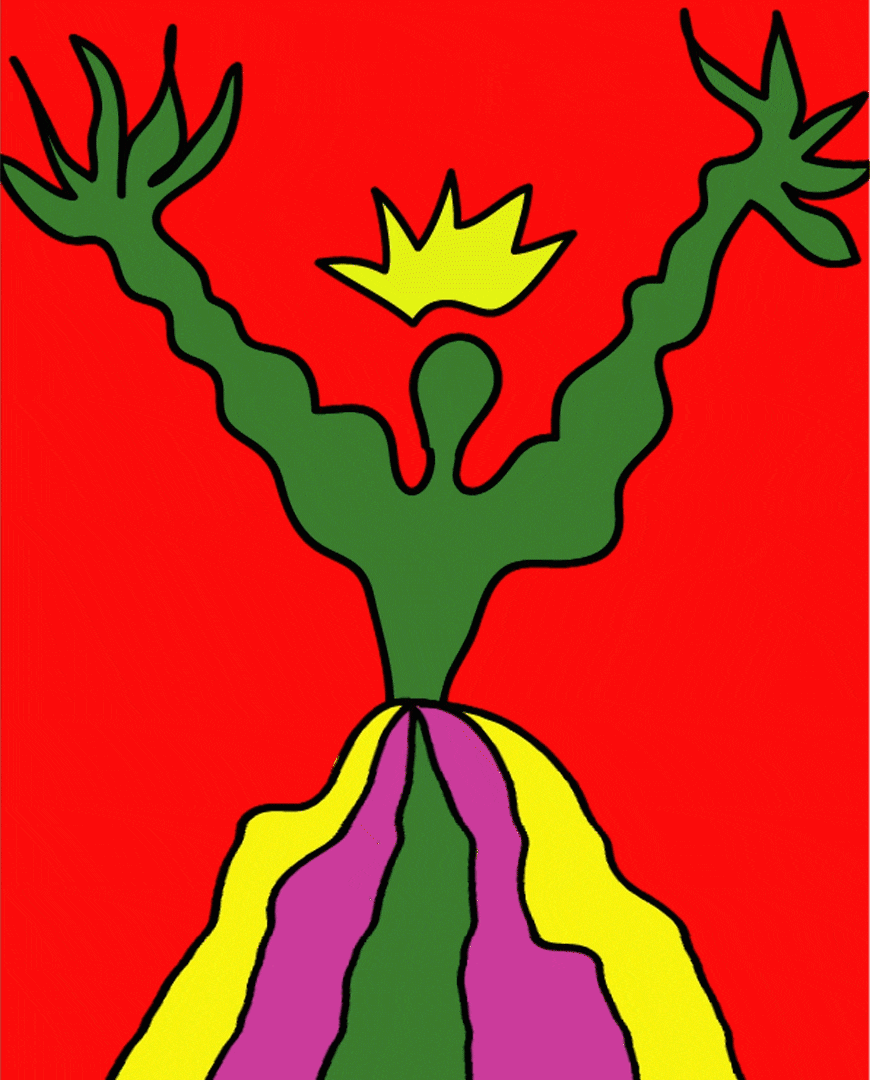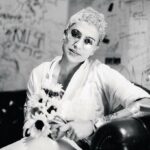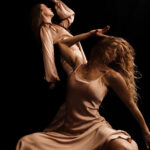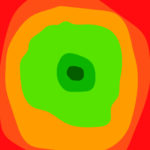If you had told sixteen-year-old me that at thirty-nine I would be a personal trainer and strength coach, I would have taken a long drag on my cigarette, exhaled in your direction and said, “You do know that I am cutting gym class right now, right?”
The 1994 version of me would be perched on a picnic table in Brust Park, in the Riverdale neighborhood of the Bronx. My eyes would be, as they often were during that era, heavily rimmed with black eyeliner. I lived for my fourteen-eyelet Doc Marten boots, chokers, and my little black hard shell purse. At that time in my life, and for nearly two decades thereafter, I thought great power came from having power over others. But in a surprising turn of events, I learned that our true power comes from within.
When you have less power and live among those who have much more, as I did growing up in New York City, it is hard to ignore how little you have in comparison. But the truth is those “powerful” people whose wealth, influence, beauty, celebrity, and political clout – are few and far between. For all of the power there is in New York City, most of the population feels disempowered in some way or another. We might be struggling to make rent, make meaning of our lives, make friends, or quite literally simply make it one more day. Frank Sinatra croons in our unofficial theme song, “If you can make it there, you’ll make it anywhere.” But is “making it” all we should expect from life?
No matter where we live in the world, our relationship with power and how we go about feeling empowered impacts our sense of well-being. So wouldn’t we want to have a relationship to power that is, well, empowering, rather than disempowering?
My answer to this conundrum has been to cultivate what I call personal power, which resides deep in the belly of each and every one of us regardless of the power-structure in which we live, and can be much more reliable than power obtained by wealth, influence, beauty, celebrity, and politics. Those all rely on external factors. Personal power comes only from within.
While there are many venues where one can cultivate personal power, I cultivate mine inside barbell clubs. When I lift heavy things – barbells, kettlebells, and dumbbells – I get in touch with the many sides of my own power. Strength training is not just about honing my physical strength, but exercising my drive, grit, and determination. I find it empowering to be a strong woman who can hold her own in the free weight section of the gym – typically seen as the domain of men. Nothing about me says, “I don’t belong here.” And after five years of powerlifting I’ve been able to take that self-confidence with me from the barbell club to the streets of New York City. No one can tell me that I don’t belong – not street harassers or advertisers. Lifting regularly puts me in touch with my personal power.
Barbell clubs are different from commercial gyms in a number of ways. They tend to be bare-bones and fairly industrial-looking – not spa-like gyms with eucalyptus scented cool towels and quiet pop music in the background. And while the people inside tend to be quite kind, the whole aura of the place can be intimidating. There are no machines with instructions. Instead, you see a lot of iron racks, iron barbells, and iron plates, which you may have no idea how to use. You may find a cable-machine, a series of pulleys, cables and interchangeable handles that is deceptively simple to use once you know what you are looking at. You will likely find some dumbbells. And there will be chalk dust on everything. Lifters use chalk on their hands to help them grip barbells, the same way you may have seen gymnasts chalk up before using the rings or uneven bars at the Olympics. And while some of the folks in there resemble the Hulk – able to lift 600 pounds or more – there are mostly average-looking people in a variety of shapes and sizes. Like New York City itself, barbell club membership here is diverse across race, sexuality, gender, age, and socioeconomic status.
It is important to remember that everyone in every barbell club, started with an empty barbell and they probably had no idea what to do with it. And almost everyone there will have a story about how barbell sports changed their life. I know one woman who manages her depression in part through lifting. I know a Muslim woman who began to lift to feel safe walking around the city wearing a hijab, which makes her a target of Islamophobia. And I know numerous women recovering from eating disorders and body dysmorphia who use lifting weights to internalize the idea that it is okay to take up space. When I started lifting, I began to feel more vital. Over time, it would become a potent tool to help me heal from Post Traumatic Stress Disorder (PTSD).
In seeing how empowering strength sports could be, I decided to become a strength coach and personal trainer. I have worked with all sorts of people with all sorts of goals – a yoga enthusiast who has heard strength training will help to protect her joints, a former college athlete who is returning to sports after a decade off, or web developer who has decided it is time to do something physical. People who just want to learn how to lift weights because they are curious about the practice, and women and genderqueer folks who are living with trauma-related disorders. Time and time again, I see my clients surprise themselves as they witness their physical power grow because they accessed their personal power.
As a trainer I meet my clients where they are, and I teach them how to pick up all of the heavy iron things one sees in the free weights section of the gym. We generally start with kettlebells (the iron balls with handles) and dumbbells (hand weights). You can use them in a number of ways to lay the foundation for healthy movement.
And then if my client wants to, which they all inevitably have, we move to the barbell. The barbell is what is used in powerlifting and Olympic weightlifting. It usually ways thirty-three or forty-five pounds. You make it heavier by adding plates to each ends. That said, when I coached Strength Groundwork, an introduction to barbell training, I taught folks how to squat, bench, and deadlift with a barbell in the first and second weeks.
The deadlift is my favorite lift to teach, and the most straightforward lift in my opinion. All it is is picking the barbell up off the ground, and standing all the way up with it. Simple as it is in theory, there is quite a bit of technique and steps involved.
To set up, you center your feet under your hips with your toes under the barbell pointing forward. Next you bend forward with a flat back, hinging at your hips and driving your bum backwards. Bending this way loads the muscles at the back of your thighs like they were a slingshot, which prevents the weight from dumping into your low back when you go to lift the bar. And then, with all of that tension in your thighs, you bend your knees to squat down and place your hands on the bar. Step one, complete.
Once you have a grip on the bar, you stack your armpits over your legs (which also helps protect the low back) and engage all of the muscles in your back. Next you breathe in, filling your lungs with air and then squeeze your abdominal muscles. Now all of the muscles of your trunk are supporting your spine, and you push the floor away by extending your knees. And voila, you stand fully upright, with the entirety of your trunk engaged, your shoulders locked in, your glutes firing, and your hips fully extended – all while holding an amount of weight you never dreamed you could lift.
To do a deadlift, you have to be alive in your body. When I stand at the top of a deadlift, especially when I initially perceived the weight as too heavy to lift, I feel my vitality coursing from my navel down into my legs and up into my chest. My feet are firmly planted on the ground. My legs are engaged and strong. My back feels broad enough to carry all of life’s burdens. At the top I am in touch with my personal power. My abdomen, home to my third chakra, is braced and full of my own breath and fire – an amazing vessel of power.
Deadlifting is an experience I want to give to everyone. That’s why I started coaching. And while I have many memories of coaching many different folks, one of my favorites is teaching my friend Kate how to deadlift.
Kate is one of my oldest friends. During my first full day at college, she and I stood next to each other in a small group of people and she pointed to my red velvet Doc Marten eight-eyelet boots and said, “I like your Docs.” And with that we became lifelong friends. Kate self-describes as “wee.” She likes “wee-things”, such as her first apartment, which she called “Just my size: Wee!” Perhaps this is why some folks from college call her “Little Kate.” And although she is little in stature, I know she is a force to be reckoned with. So, when she was last in New York City, she met me at JDI Barbell, where I was working at the time, and I taught her how to deadlift. In one hour, she was deadlifting nearly her own bodyweight repeatedly.
I asked her recently, “How did you feel when you deadlifted?”
“I fucking loved it,” she said. “I felt powerful in my body in a different way from running. More like birth.”
“Yes! And did that change how you saw yourself?”
“It did. In a way, it was like after I had both the kids without any drugs and felt a whole new sense of strength, literal and metaphorical, I have available in my body.”
In other words, she got in touch with the largess of her personal power. I am telling you this story because you can do what Little Kate and I, Laura, did, too. I promise you, you have more strength available in your body than you know – literally and metaphorically.
While personal power may seem like the little black dress (or, in this context, the cute black sneakers) you can wear anywhere, it does tend to thrive in certain conditions. You can theoretically tap into this anywhere you can find a barbell, but I recommend you try to find a barbell club with staff and coaches that treat members like athletes who want to get strong. Most commercial gyms tend to focus on folks whose primary goal is weight loss and getting smaller. Barbell clubs tend to focus on developing strength and performance therefore you are more likely to find coaches that help you feel empowered.
Coaching from a place of empowerment is something I take very seriously and it has led me to teach people to lift the heaviest of things in a kind and compassionate way. I work with my clients to gain a deep understanding of what it feels like to move right and how to stay embodied even during the stress of lifting heavy things. I work to make the gym feel safe to everyone. I work to help my clients find their confidence, and to feel capable to pursue whatever it is they will find joyful and fulfilling. And perhaps most importantly to feel their personal power – to feel worthy of being in this world exactly as they are today. As one client wrote on behalf of herself, her husband, and their friend: “Thank you for introducing us to this sport and making it so welcoming, enjoyable, and valuable!” These are not adjectives generally associated with barbell training, but should be.
I spend my days navigating a city that is known for being a beacon of power, and thanks to its barbell clubs I’m adding my own light to that beacon. But rather than engaging in the power-over method of many of my neighbors, I derive empowerment from the knowledge that I am worthy of love, safety, and kindness no matter who else is sharing this city or even this world with me. Do you know that you are worthy of love, safety, and kindness, too? If not, I invite you to consider lifting heavy things.
Laura Khoudari is a trauma informed strength training expert and serves as the Director of Trauma Informed Training for Women’s Strength Coalition. Her work has been featured in Tonic, Outside Online, Buzzfeed, Girls Gone Strong, and Medium. She is currently working on her first book and pursuing a masters in Counseling for Mental Health and Wellness at NYU. She lives in New York City with her family.






